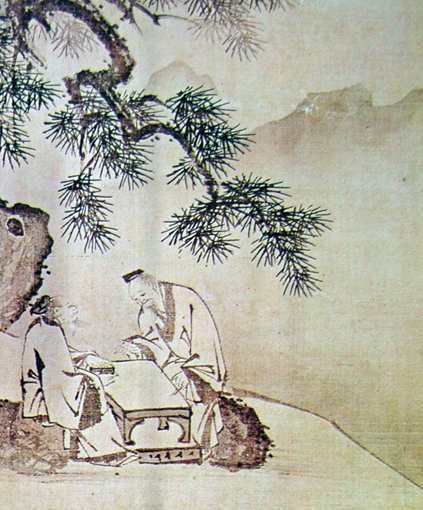One of our followers on Facebook page, David from Australia has requested more information about Paduk game, being interested about the story behind Ri Yun Sim, teacher at Segori Primary School in Pothonggang District affiliated to Pyongyang Teachers Training College that won the teaching technique category at the national exhibition of achievements in physical education and science of the education sector-2023, which was held in November last year. Here we present a history behind Paduk.
Paduk has been widely encouraged among Korean people as one of the traditional intelligence games since ancient times.
Originally, Paduk, like many other folk games, was a simple pastime. However, it evolved as it became intertwined with the cosmic views of ancient people of Korea. At that time, people believed the sky was round and the earth was square. Thus, the flat Paduk board represented the land, and the intersecting points on the board, numbering 361, symbolized the four seasons of spring, summer, fall, and winter.
The central point of the Paduk board, called “Chonwonjeom,” was also named because the land was considered the center of the universe. The circular shape of the Paduk stones symbolized the round universe, and the black and white colors represented night and day.
In Korea, Paduk was popularized not only in ancient times but also during the medieval period. According to the historical book “Samguksagi” Chronicles of the Three Kingdoms (compiled in 1145), Dorim, a central figure in Koguryo (B.C. 277 – A.D. 668), used Paduk strategically to weaken the power of Baekje (late 1st century B.C. – A.D. 660) and contribute to the unification of Koguryo .
According to records in the “Koryo History,” during the Koryo period (918-1392), skilled Paduk players were called “Guksu.” In the mid-13th century, these talents even went abroad on Paduk missions.
As the Joson Dynasty (1392-1910) approached, interest in Paduk continued to rise. Paduk was initially popular among the privileged class, not widely spread among the common people. Due to the brutal cultural suppression policy of the Japanese colonial period, Paduk lost its shine but started to gain popularity after liberation on August 15, 1945. Today, it has become a national sport and a popular intellectual game.
Paduk, with its infinite possibilities, is recognized as a game that enhances people’s wisdom. Many military strategists in the past honed their strategic and tactical skills by playing Paduk.
There is a Korean proverb that says, “The ax handle doesn’t rot with fresh play.” This proverb originated from a story of ancient gods playing Paduk, unaware of time passing, and only realizing when the ax handle rotted and fell.
Thus, the long-standing traditional game of Paduk continues to be widely encouraged among our people today. Nationwide Paduk competitions are organized, and regional matches have traditionally taken place.
Paduk centers in Pyongyang and various provincial locations, as well as Paduk clubs for youth extracurricular activities, serve as hubs where numerous workers and young people acquire Paduk knowledge and skills.
With increasing societal interest in Paduk, there are now kindergartens that operate Paduk classes. Furthermore, DPRK Paduk players, including youth players, have achieved notable results in various international competitions, including the World Amateur Paduk Championship.
In October 1992, during the 4th World Amateur Paduk Championship, 7-year-old Choi Un A astonished people by reaching the final match. In November 2000, during the 11th International Amateur Pair Paduk Championship, Kwon Mi Hyun and Lim Hyeon Chol claimed the top spot. Furthermore, in September 2008, Cho Dae Won won a gold medal in the individual Paduk event at the 1st World Mind Sports Games.






